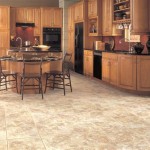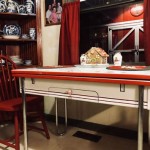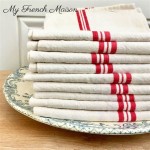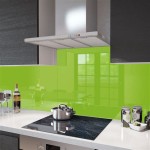How to Clean Wood Kitchen Cabinets of Grease
Grease accumulation on wood kitchen cabinets is a common issue in most households. Its presence is often unavoidable due to the continuous cooking activities. Over time, grease can build up, attracting dust and dirt, creating a sticky and unsightly film that is difficult to remove. Regular cleaning can prevent this buildup and maintain the aesthetic appeal and longevity of the cabinets. Neglecting to clean grease can lead to permanent discoloration and even damage the wood finish. This article provides a detailed guide on how to effectively clean wood kitchen cabinets of grease, utilizing safe and appropriate methods.
The first step involves understanding the type of wood used for the cabinets and the type of finish applied. Different wood types, such as oak, maple, or cherry, may react differently to various cleaning solutions. Similarly, the finish, whether it's a varnish, lacquer, or paint, will influence the choice of cleaning agents. This knowledge is crucial to avoid damaging the cabinets during the cleaning process. Harsh chemicals or abrasive scrubbers can strip the finish or scratch the wood, resulting in costly repairs or replacements. Identifying the finish can often be done by observing the cabinet's sheen and texture. A glossy surface likely indicates a varnish or lacquer, while a more matte finish might suggest paint. If unsure, it is recommended to consult the manufacturer's documentation or a professional.
Before applying any cleaning solution to the entire cabinet surface, it is essential to perform a spot test in an inconspicuous area. This test will help determine if the solution causes any discoloration, damage, or undesirable reactions to the wood and finish. A spot on the inside of a cabinet door or behind a drawer is an ideal location for this test. Apply a small amount of the cleaning solution to the chosen spot and allow it to sit for a few minutes. Wipe it off and observe the area for any changes. If no adverse effects are observed, proceed with cleaning the rest of the cabinets. If there are any signs of damage, discontinue use and explore alternative cleaning methods.
Gathering Necessary Supplies
Effective grease removal begins with having the right tools and cleaning solutions. The following list outlines the essential supplies needed for cleaning wood kitchen cabinets:
*Soft cloths or microfiber cloths:
These are gentle on wood finishes and prevent scratching. Avoid using abrasive scrub pads, which can damage the surface. *Warm water:
Warm water is a basic but effective cleaning agent for loosening grease and grime. *Mild dish soap:
A gentle dish soap is effective at cutting through grease without being too harsh on the wood finish. Choose a soap that is free of harsh chemicals and fragrances. *Baking soda:
Baking soda is a natural abrasive that can help remove stubborn grease stains. It is important to use it sparingly and gently to avoid scratching the surface. *White vinegar:
White vinegar is a natural degreaser and disinfectant. It can be diluted with water to create a safe and effective cleaning solution. *Spray bottle:
A spray bottle is useful for applying cleaning solutions evenly and efficiently. *Soft-bristled brush (optional):
A soft-bristled brush can be used to gently scrub hard-to-reach areas or stubborn grease stains. *Clean, dry towels:
Clean, dry towels are essential for drying the cabinets after cleaning to prevent water damage. *Protective Gloves:
Wearing gloves protects your hands from the cleaning solutions and grease.Ensuring you have these supplies readily available will streamline the cleaning process and help you achieve optimal results.
Step-by-Step Cleaning Process
Once the supplies are gathered, follow these steps to effectively clean grease from wood kitchen cabinets:
-
Prepare the cabinets:
Begin by removing any items from the countertops and clearing the area around the cabinets. This will provide ample space to work and prevent accidental spills or damage. -
Dust the cabinets:
Use a dry cloth or duster to remove any loose dust, dirt, or debris from the cabinet surfaces. This will prevent the dirt from mixing with the cleaning solution and creating a muddy mess. -
Prepare the cleaning solution:
Mix a small amount of mild dish soap with warm water in a bucket or spray bottle. Alternatively, create a solution of equal parts white vinegar and warm water. For stubborn grease stains, create a paste of baking soda and water. -
Apply the cleaning solution:
Dip a soft cloth into the chosen cleaning solution and wring out any excess liquid. Gently wipe down the cabinet surfaces, paying particular attention to areas with heavy grease buildup. For hard-to-reach areas or stubborn stains, use a soft-bristled brush to gently scrub the surface. If using a spray bottle, spray the cleaning solution directly onto the cloth, not directly onto the cabinet. -
Rinse the cabinets:
After cleaning, use a clean, damp cloth to wipe away any remaining soap residue. It is important to remove all traces of the cleaning solution to prevent the cabinets from becoming sticky or attracting more dirt. -
Dry the cabinets:
Use a clean, dry towel to thoroughly dry the cabinet surfaces. This will prevent water spots and protect the wood finish. -
Address Stubborn Grease:
For areas with heavy grease buildup, apply a paste of baking soda and water. Gently rub the paste onto the grease stain and let it sit for a few minutes. Use a damp cloth to wipe away the paste and rinse the area with clean water. Dry thoroughly.
This method provides a comprehensive approach to cleaning grease from wood kitchen cabinets, ensuring a clean and well-maintained kitchen environment.
The frequency of cleaning will depend on the amount of cooking done and the location of the cabinets. Cabinets near the stove or frequently used cooking areas will require more frequent cleaning than those farther away. Generally, wiping down the cabinets with a damp cloth weekly and performing a more thorough cleaning monthly is recommended. Regular maintenance will prevent grease buildup and make cleaning easier in the long run. If spills or splatters occur, it is best to clean them up immediately to prevent them from drying and becoming harder to remove.
Alternative Cleaning Solutions and Methods
While the above method is effective for most grease removal tasks, alternative solutions and methods can be employed for specific situations or preferences:
*Commercial Degreasers:
Several commercial degreasers are specifically designed for kitchen cabinets. When using these products, it is imperative to follow the manufacturer's instructions carefully and test the product in an inconspicuous area first to ensure it does not damage the finish. Choose a degreaser that is specifically formulated for wood surfaces. *Lemon Oil Polish:
Lemon oil polish can be used to clean and protect wood cabinets. It helps to remove grease and grime while also adding a protective layer that repels dust and water. Apply a small amount of lemon oil polish to a soft cloth and wipe down the cabinet surfaces. Buff the cabinets with a clean, dry cloth to achieve a lustrous shine. *Steam Cleaning:
Steam cleaning can be an effective way to loosen grease and grime without using harsh chemicals. Use a steam cleaner with a soft brush attachment and gently steam the cabinet surfaces. Wipe away any excess moisture with a clean, dry cloth. Ensure the steam cleaner is set to a low setting to avoid damaging the wood finish. *Homemade Orange Oil Cleaner:
Combine orange essential oil with a carrier oil like olive oil or coconut oil. The citrus properties of orange oil help to dissolve grease, while the carrier oil moisturizes the wood. Apply the mixture to a soft cloth and wipe down the cabinets. Buff with a clean, dry cloth.These alternative methods offer various options for cleaning wood kitchen cabinets of grease, catering to different preferences and needs.
Proper ventilation is crucial when cleaning kitchen cabinets, especially when using strong cleaning solutions. Open windows or turn on the kitchen exhaust fan to ensure adequate airflow. This will help to dissipate any fumes from the cleaning solutions and prevent them from lingering in the air. Additionally, wearing a mask can help to protect against inhaling any airborne particles or chemicals. Ensuring good ventilation will create a safer and more comfortable cleaning environment.
Once the cleaning is complete, consider applying a wood polish or conditioner to the cabinets to further protect the finish and enhance their appearance. These products help to moisturize the wood, preventing it from drying out and cracking. They also add a layer of protection against future grease buildup and stains. Follow the manufacturer's instructions when applying wood polish or conditioner. Use a soft cloth to apply a thin, even layer and buff the cabinets to a shine. Regular application of wood polish or conditioner will help to keep the cabinets looking their best for years to come.
Maintaining clean wood kitchen cabinets is an ongoing process. Regular cleaning and preventative measures will help to keep the cabinets looking their best and prevent grease buildup. By following the steps outlined in this article and adapting the methods to specific needs and preferences, it is possible to effectively clean wood kitchen cabinets of grease and maintain a clean and attractive kitchen environment. Consistent effort and proper care will preserve the beauty and longevity of wood kitchen cabinets.

How To Clean Kitchen Cabinets Everyday Skate

Removing Grease From Kitchen Cabinets House Cleaning Tips Safe S Clean

How Remove Grease From Wood Kitchen Cabinets
How To Clean Sticky Wood Kitchen Cabinets Quora

How To Clean Prep Wood Kitchen Cabinets Before Painting Do Dodson Designs

How To Clean Grimy Kitchen Cabinets With 2 Ingredients

How To Clean Sticky Wood Kitchen Cabinets Easily Infinity

How To Quickly Clean Cabinets Remove Grease Gunk Andrea Jean

How To Remove Grease From Kitchen Cabinets 3 Methods Bob Vila
:max_bytes(150000):strip_icc()/ways-to-clean-wood-kitchen-cabinets-3017289-00-fb8e5ae9eb004ec6b968f9d53e74cd1e.jpg?strip=all)
Tips For Cleaning Food Grease From Wood Cabinets
Related Posts








